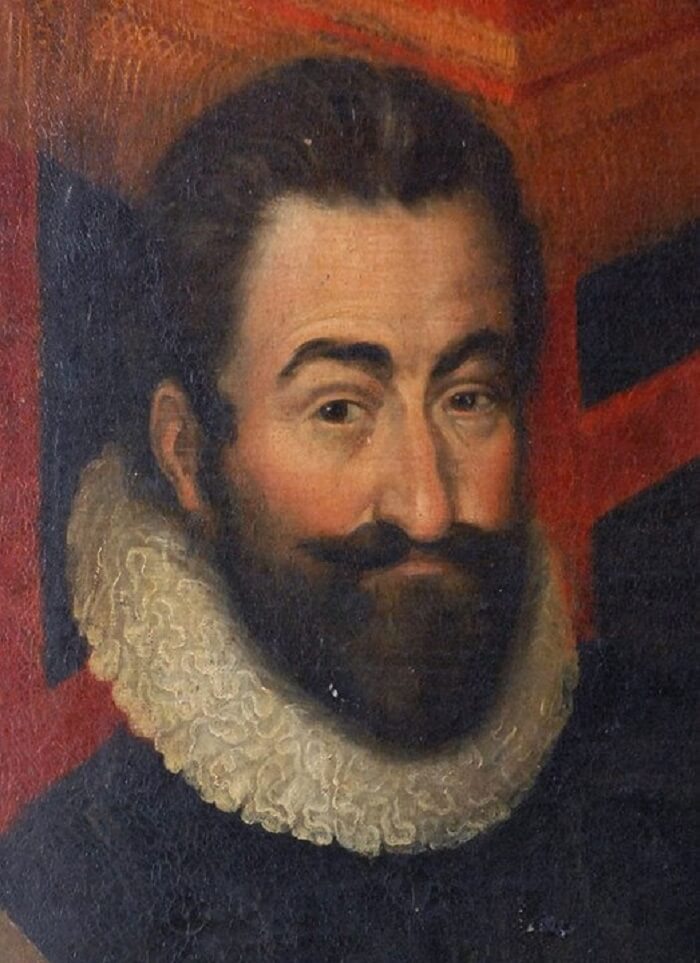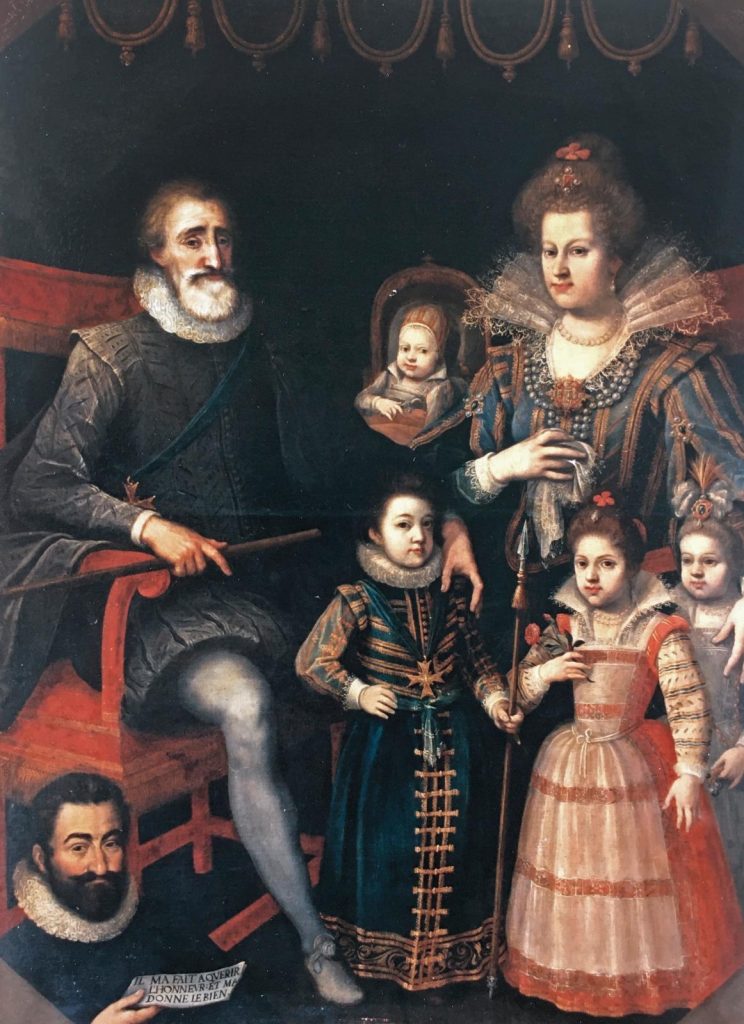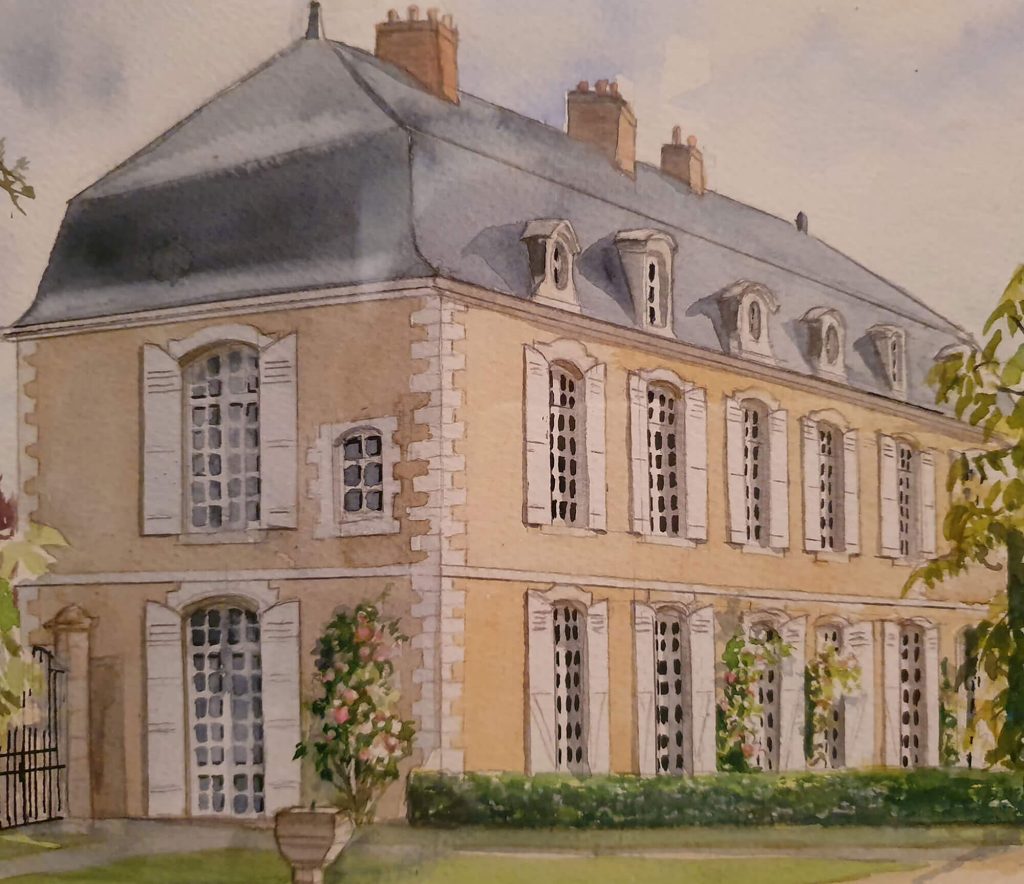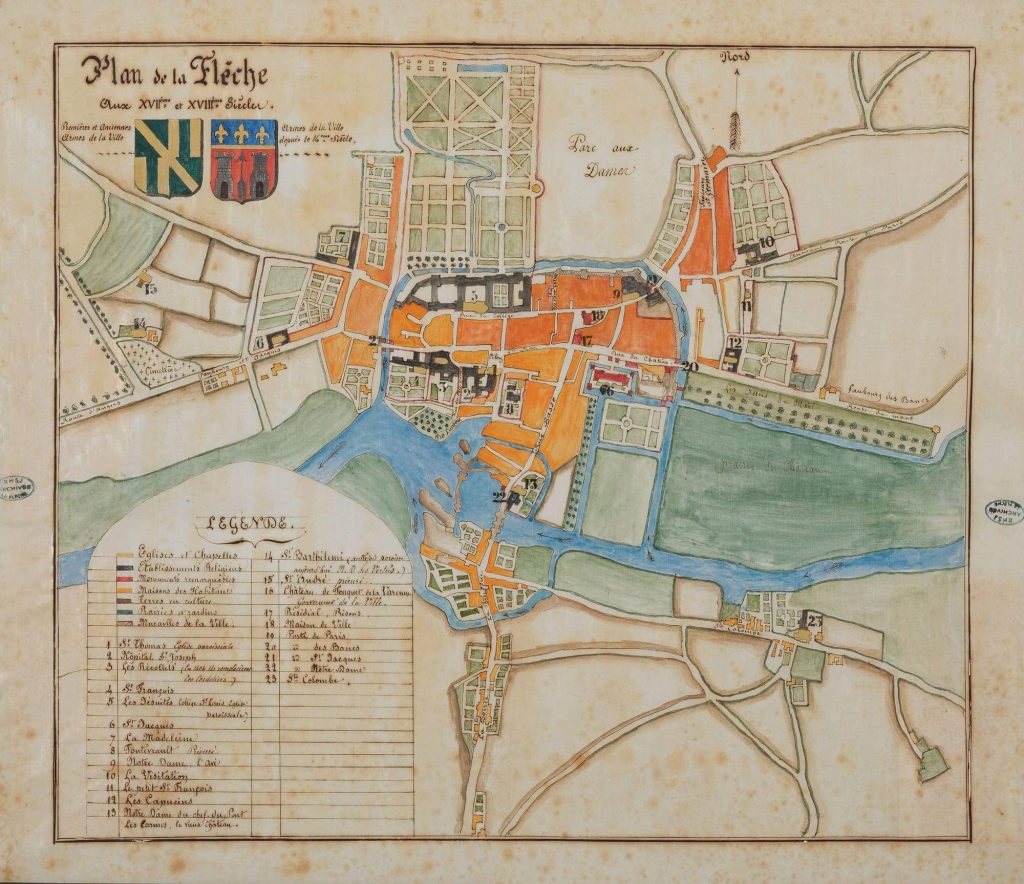History
La Templerie: a historic residence
At the end of the “old faubourg des Bans”, on the edge of the “grand chemin mansays”, there was already a farm belonging to the half-religious, half-military order of the Knights of the Temple in the 12th century.
Guillaume Fouquet de la Varenne (1560 -1616) bought the Templerie and all the surrounding land when he settled in La Flèche in the early 17th century.
A hundred years later, at number 41 rue de la Tour d’Auvergne, between the buildings of this Templar farm and the gardens of the Capuchin convent, Charles le Noir des Ormeaux (1621-1701), councillor to the Presidial, or more likely his eldest son Pierre, Sieur de la Cochetière (1654-1724), also a councillor to the Presidial, who came from an old Fléchoise family, had the present hotel built.
The purity of the lines denounces the heaviness of the Louis XIII style, ashlar has replaced brick. The large window frames with small panes let in light everywhere. The pediment on the street evokes ancient Greece. The high sloping roofs have been replaced by mansard roofs with broken sides. The absence of projections, of overloaded decorative motifs, the harmony of proportions, the symmetry, the grace and elegance, the taste for order create by their simplicity a perfect example of French classicism of the first half of the 18th century.
The name of the architect is not known, but the work could be signed Ange-Jacques Gabriel (1698-1782) or Jules Hardouin-Mansart (1646-1708) and it is known that it was completed before 1715.
At the same time, a beautiful square courtyard for the crews and a large French park were laid out, before an angled wing was added on the street in the 19th century.
The reception rooms were once located on the first floor, known as the “bel étage”. Before 1936, it was accessed by a tufa staircase with straight flights and a landing, which occupied the current “breakfast room” (the former hallway).
The Choiseul-Praslin family, who in 1787 had their lands of La Varenne converted into a marquisate, were the heirs of the Champagne family, 29th and 30th lords of La Flèche, themselves heirs by marriage to the La Varenne family, the last of whom died without issue (1714).
At the time of the Revolution, the Lords of Choiseul, Dukes of Praslin, Lords by commitment of the Barony of La Flèche and owners of the former Marquisate of La Varenne, were unable to occupy either the Château des Carmes, sold as a national asset, or the Château de la Varenne, which had been looted by the revolutionaries, and bought La Templerie, which took the name of Hôtel de Choiseul. One of their granddaughters, Isabelle de Polignac, married the Count of Bagneux, who thus became the owner of the royal barony “hired” by Henri IV from Guillaume Fouquet de la Varenne.
This explains why, until the sale of La Templerie in 2020, the hotel housed the famous painting, attributed to François Pourbus (1569-1622), depicting Guillaume Fouquet de la Varenne at the feet of Henri IV (1553-1610) and his family.
Since Guillaume Fouquet de la Varenne and until the death of Alain d’Acher de Montgascon in 2014, La Templerie has remained in the same family, through the de Champagne, de Choiseul-Praslin, de Polignac and de Bagneux families.
In 2020, with a passion for history and heritage, and a love of old buildings, we embarked on the major restoration work necessary to safeguard this beautiful residence.
La Templerie, with its newfound light and nobility, is turning a new page in its history.
Today, it opens its doors to its guests to enable them to spend a pleasant stay in La Flèche…
Source: Pierre Schilte, Le château des Fouquet de la Varenne à La Flèche au xviie siècle, Le Mans, Imprimerie Martin, 1987-1988.






